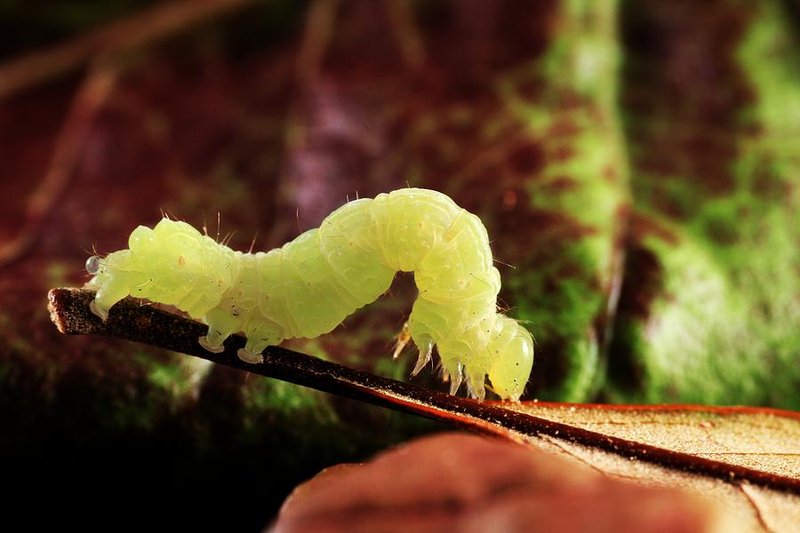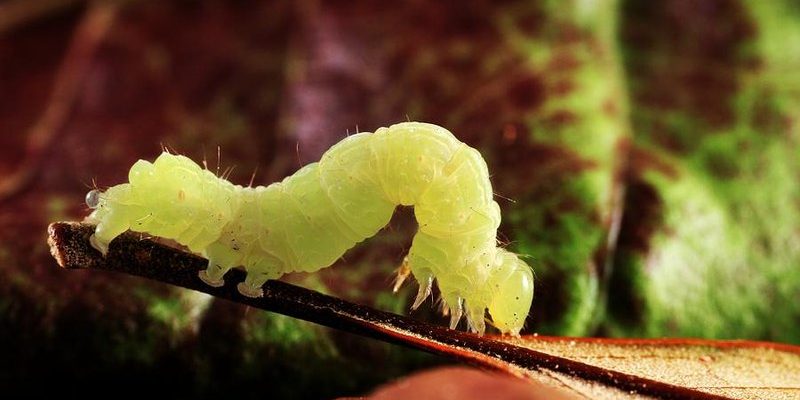
Inchworms, often seen inching along the branches of trees or shrubs, are the larval stage of moths from the Geometridae family. Watching them move is both entertaining and educational. Plus, by creating a habitat garden, you’re not just observing inchworms; you’re also nurturing the environment. Imagine each plant as part of a puzzle that contributes to the bigger picture of your garden. So let’s dive into the steps to create this perfect habitat!
Choosing the Right Location
The first step in creating a habitat garden for inchworm observation is picking the right spot. Ideally, you want a location that gets plenty of sunlight but also offers some shade. Inchworms thrive in environments where they can blend in with their surroundings, so think about areas with existing trees or shrubs. By choosing a spot with a mix of sun and shade, you’ll create a balanced environment that attracts these critters.
Consider the soil too. Well-draining soil rich in organic matter will support the plants that inchworms rely on for food and shelter. You might wonder how to test your soil. Easy! Grab a handful, make it into a ball, and see if it holds together. If it crumbles, you might need to amend it with compost or organic material to make it more welcoming for both plants and inchworms.
Selecting the Right Plants
Now that you have your location sorted, it’s time to think about plants. Inchworms love leafy plants, and having a variety ensures they can munch away happily while you observe their antics. Some excellent choices include:
- Oak Trees
- Maple Trees
- Dogwood
- Cherry Trees
- Various shrubs like viburnum or honeysuckle
Each of these plants provides perfect hiding spots for inchworms and acts as a food source. You might also consider planting herbs like parsley or dill, which not only attract inchworms but also bring a delightful smell to your garden.
When selecting plants, think about layering. Tall trees can provide shade while shorter shrubs and flowers can fill in the lower levels. This layered approach creates a three-dimensional space that encourages wildlife to flourish. And trust me, the more diverse your garden, the more inchworms and other creatures will want to call it home.
Creating Shelter and Safety
Inchworms, like many creatures, require a safe space to thrive. That means providing shelter is crucial. You can create nooks and crannies for them to hide in using mulch, rocks, or even small logs. This not only protects them from predators but also gives them the camouflage they need to go about their daily activities.
Another consideration is avoiding pesticides and herbicides. These chemicals may kill off inchworms and other beneficial insects. Instead, consider natural pest control methods, like introducing ladybugs or using neem oil. Keeping your garden chemical-free will create a safe haven for inchworms and promote a healthy ecosystem.
You might also want to incorporate birdhouses or bat boxes, which can help control the insect population without harming your inchworm friends. It’s a delicate balance, but fostering a safe environment will encourage inchworms to thrive in your garden.
Watering and Maintenance
Once you’ve planted everything and provided shelter, maintaining your habitat garden is the next step. Regular watering is key, especially in dry spells. But keep in mind that inchworms prefer slightly moistened soil—overwatering can lead to root rot in plants. A simple way to gauge this is by sticking your finger in the soil; if it feels dry an inch down, it’s time to water.
Maintaining your garden also means pulling weeds, but be careful not to disturb the inchworms’ homes. A good practice is to weed by hand on a sunny day when inchworms are less active. This ensures you won’t accidentally harm them while keeping your plants healthy.
Additionally, pay attention to any signs of pests. If you notice aphids or caterpillars munching on your plants, look for natural remedies to manage the population without harming your inchworms. Think of your garden like a symphony. Each part must work together for the entire orchestra to sound beautiful.
Observing Inchworms: Best Practices
Now comes the rewarding part: observing your inchworms! Grab a comfy chair, a notebook, or a camera and settle in for some nature-watching. Here’s how to make the most of your observation time:
1. Time of Day: Inchworms are generally more active during the warm parts of the day. Late mornings or early afternoons are perfect for spotting them on branches or the ground.
2. Be Patient: Nature observation is all about patience. You might need to sit still for a while to catch a glimpse of these little guys. Bring a book or a snack to enjoy while you wait!
3. Document Your Findings: Take notes on their movement, behavior, and interaction with their environment. This can be a great learning experience, especially if you have kids or friends with you. You’ll be amazed at what you can learn from simply watching them inch along.
The Joy of Sharing Your Garden
Creating a habitat garden isn’t just about inchworm observation; it’s also about connecting with your community. Consider inviting friends or family over for a garden tour. Kids especially love getting involved—set up a little scavenger hunt to find inchworms in the garden.
Share your observations on social media or a blog. You never know who might be inspired to create their own habitat garden after seeing your success. Remember, every garden is a chance to learn, share, and grow together—just like the inchworms you’re watching.
Creating a habitat garden for inchworm observation is not only a fun project but also a meaningful way to contribute to your local ecosystem. By carefully selecting plants, providing shelter, and patiently observing, you can witness the fascinating lives of these little creatures. Plus, every inchworm you see is a reminder of the delicate balance in nature and our role in nurturing it.
So grab your tools, pick the perfect spot, and start planting! Your future inchworm friends are waiting for their new home. Enjoy every moment of this gardening adventure, and don’t forget to take time to stop, look, and appreciate the wonders right outside your door.

